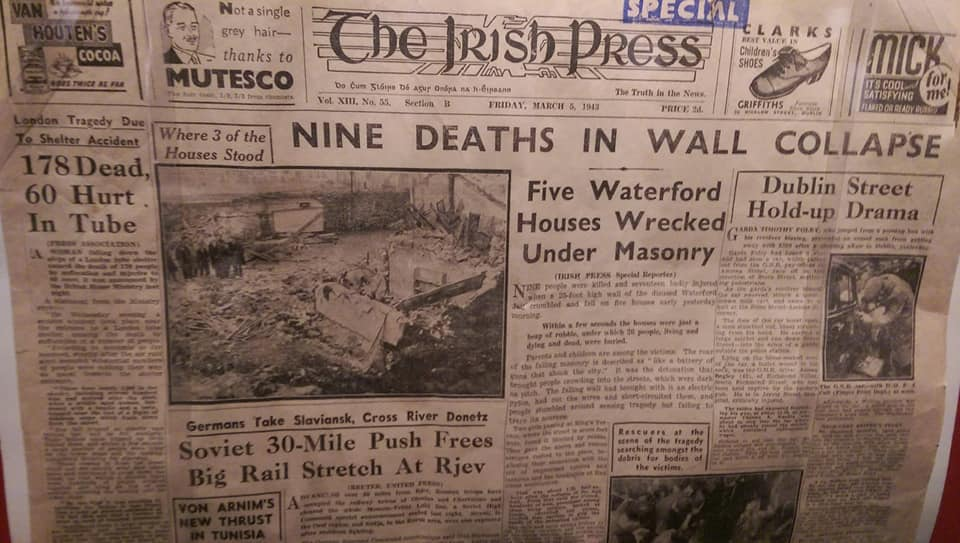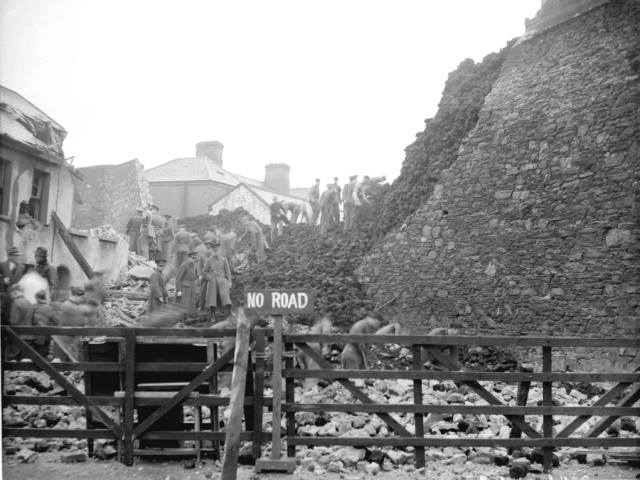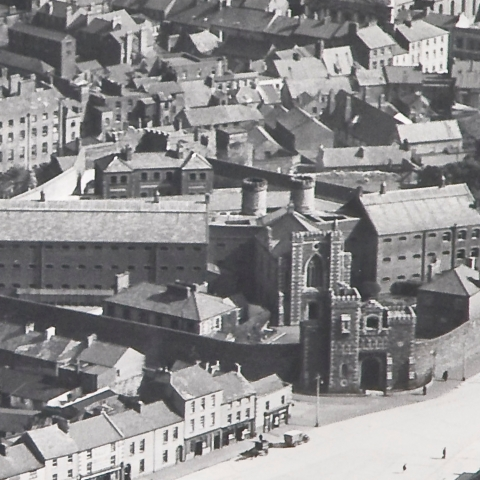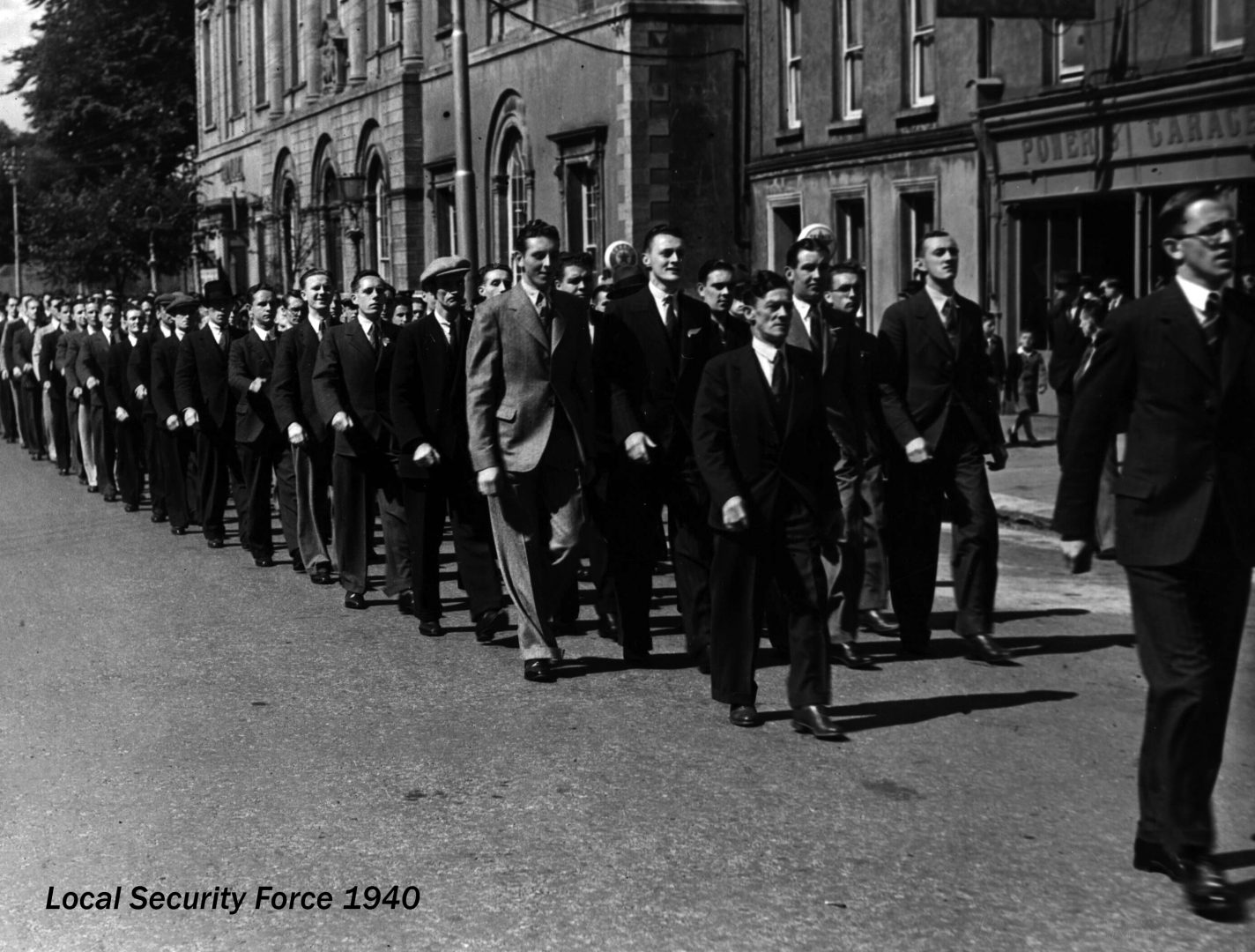
The Waterford Jail Disaster occurred early morning on 4 March 1943 when the wall of the old city jail at Ballybricken in Waterford, Ireland, collapsed, sending 120 tons of turf onto a row of nearby houses, killing nine people and injuring seventeen.

The old Waterford Jail had been built in 1727 alongside the military barracks in the city. The building was rebuilt in 1861 and continued to be used as a prison until 1939 at the beginning of the Emergency, as World War II was officially known in neutral Ireland. The following year the building was taken over by the Irish army and used as a meeting place and storage depot for the Local Defence Forces, a wartime reserve force.
On the night of the wall collapse, there had been heavy rain and a weak wall filled with water became porous at its foundations from disuse. At approximately 12:45am on the morning of 4 March, the sixty-foot high wall gave way and collapsed onto the houses of King’s Terrace and part of Barker Street, killing and injuring some of the occupants as they slept. A section of more than a hundred feet of wall fell, in total demolishing four houses and damaging a further three. It is further believed that additional pressure had been placed on the old jail wall by rain-sodden turf which was being stored in the premises by the army for heating purposes due to the shortage of imported coal.

Crowds assisted local emergency services in removing the heavy rubble, but there was nothing they could do. Nine bodies were pulled from the jail ruins, including a number of children, the youngest being 2 years old. Those who lost their lives in the Jail Wall tragedy were: James Roche (age 60), Thomas Roche (age 20), Maureen Roche (age 20), James Seamus Roche (age 6), James Barrett (age 11), Kitty Barrett (age 9), Joseph Upton (age 60), Patrick Upton (age 15) and Betty Steward (age 2). Residents of surviving houses on King’s Terrace were evacuated after the disaster and catered for over a 3 week period by the Red Cross at St Joseph’s Boys Club on the Yellow Road.

The subsequent funerals were among the largest ever seen in Waterford City. Many hundreds attended the funerals over the following days as the city descended into a period of mourning with shops closing and blinds being drawn. Huge crowds of mourners lined the streets as bands played the Dead March in Saul by Handel. The jail was eventually demolished in 1949.
Over 60 years later, a special memorial has been unveiled by Waterford City Council. Designed by Co Wexford artist Declan Breen, who was also responsible for the sculpture and water feature at the main entrance to Waterford Regional Hospital, the memorial is sited near the Bull Post on the green area of Ballybricken. The installation on a platform features a bronze plaque with the names of the nine victims laid horizontally on the raised ground with a large bronze ivy leaf also fixed to the ground.


